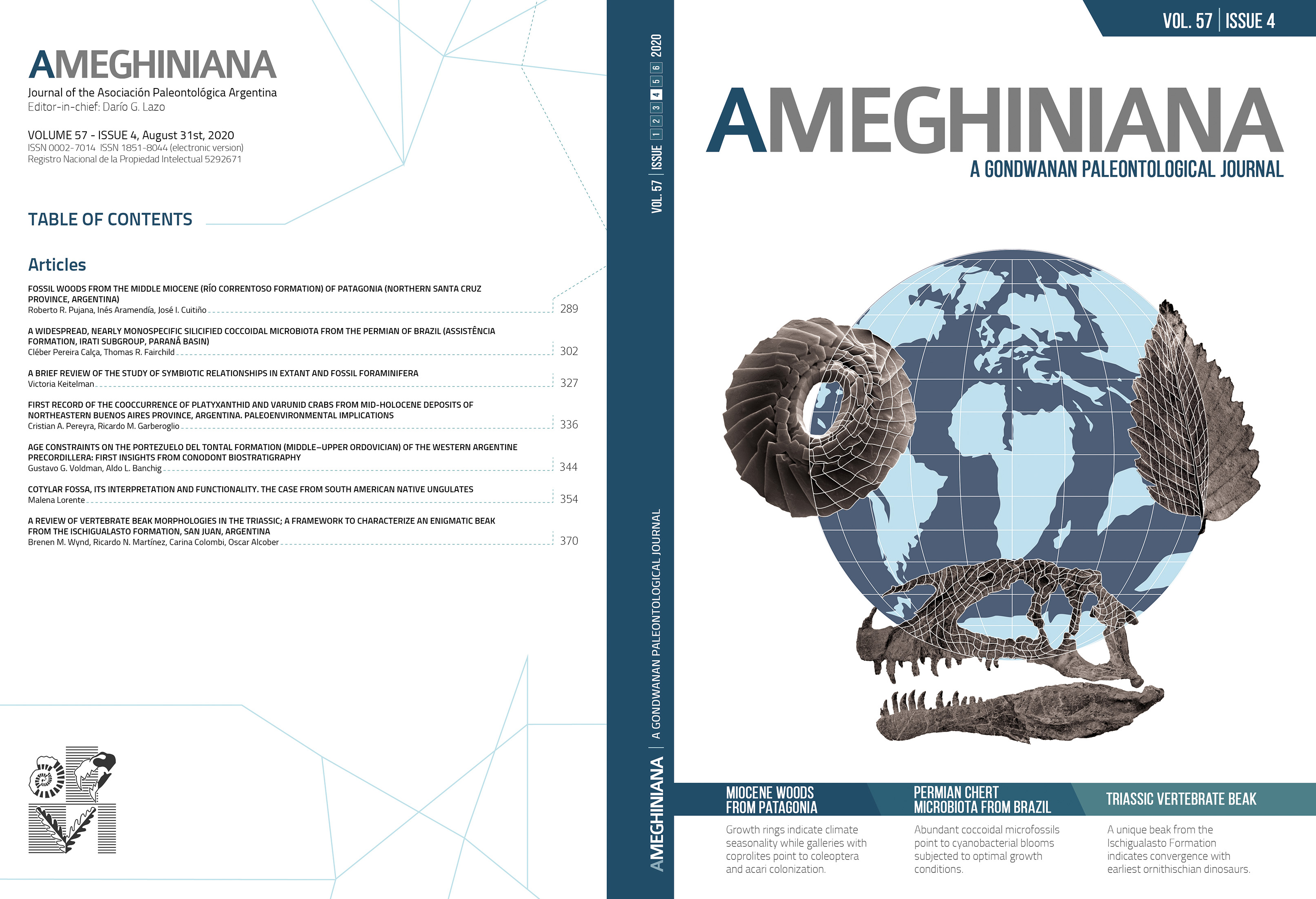A WIDESPREAD, NEARLY MONOSPECIFIC SILICIFIED COCCOIDAL MICROBIOTA FROM THE PERMIAN OF BRAZIL (ASSISTÊNCIA FORMATION, IRATI SUBGROUP, PARANÁ BASIN)
DOI:
https://doi.org/10.5710/AMGH.21.04.2020.3331Keywords:
Gloeodiniopsis lamellosa, Cyanosarcinopsis hachiroi, Rubusforme paraisolandensisAbstract
Well-preserved fossil microbiotas normally present relatively high taxonomic diversity, especially if the host-rock is distributed over a large area. Estimates of taxonomic diversity, however, require proper consideration of ontogenetic, taphonomic, and ecological influences on morphological variety. Otherwise, diversity may be overestimated. Chert in the Permian Assistência Formation (Irati Subgroup, Paraná basin, Brazil) contains an abundant, well-preserved fossil microbiota that has been studied from seven localities distributed over about 500 km. Despite the great numbers of microfossils present, morphological analysis revealed a low apparent diversity. There is no evidence of filamentous microorganisms and the chroococcacean Gloeodiniopsis lamellosa is overwhelmingly dominant, accounting for 98.6% of counted individuals. In addition to G. lamellosa, only five taxa are recognized of which four are formally described: the chroococcaceans Cyanosarcinopsis hachiroi gen. et sp. nov. and cf. Coniunctiophycus sp. and two taxa considered incertae sedis: Myxococcoides sp. A (a probable cyanobacterium) and Myxococcoides sp. b (a possible delicate eukaryote). A unique but markedly different colony was designated as unnamed form (open nomenclature). Two hypotheses may explain the enigmatic absence of filaments: (i) environmental stress associated with hypersaline conditions that severely limited diversity or (ii) long-term optimal growth conditions for coccoidal cyanobacterial blooms due to sustained basin-wide eutrophic conditions.
Downloads
Published
Issue
Section
License
Authors publishing in Ameghiniana have the option of making their article freely available online. Authors opting for the Open Access must pay a fee of $300 (US dollars) to cover article-processing costs and to ensure the article is made open access. Please contact the Production Team after the acceptance of your manuscript if you are interested in making your article Open Access. This option implies by default a license Creative Commons Attribution Non-Commercial-NoDerivs License (CC BY NC ND). If your funding institution requires a different licensing option please communicate this to the Production Team after the acceptance of your manusctipt.











